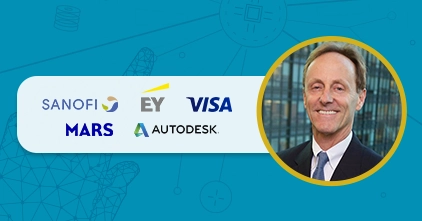
Upskill your employees while honing their language proficiency. Here’s how to maximize your training with Content and Language Integrated Learning:
In the modern workplace, skills and their constant improvement are increasingly valuable assets. A recent study by recruitment company Hays reports that 77% of surveyed employers say that individuals who upskill regularly are more attractive candidates. Moreover, a PwC survey reveals that 38% of CEOs globally are extremely concerned about the availability of key skills as a threat to business growth.
That’s why organizations are allocating resources to “upskill” their employees; providing personal advancement opportunities and responding to the undermining skills gap as it affects the productivity, engagement, and competency of the organization.
With a massive skill shift underway, the need for globally competitive professionals goes hand in hand with them effectively communicating with other professionals as with their clients. Fortunately, there’s a program that hones both soft skills and language proficiency at the same time: Content and Language Integrated Learning.
Defining Content and Language-Integrated Learning
Content and Language Integrated Learning (CLIL) is a subtle language learning strategy that organizes instruction around meaningful content.
In other words, it is studying content by making use of a foreign language and vice versa. It’s basically learning through a language, giving the learner the opportunity to learn subject-oriented content whilst also acquiring a new language.
What makes CLIL a widely used methodology for language learning is that it increases motivation by incorporating topics that interest the learner, improves internalization, and is relevant to real-life situations.
The Use of CLIL in the Area of Reskilling
In reskilling, education that infuses a certain subject matter with language fills two needs with one deed. In the corporate context, wouldn’t language learning interlaced with business-related terminologies be more beneficial for employees?
So, whatever the topic may be — business, sales, or marketing, CLIL can also enhance the learner’s field of expertise in a universal language.
Say, learners are being taught how to effectively sell products to a prospective client or how to pitch a project proposal. Applicable content in a language that is also needed in daily tasks not saves time but also optimizes efficiency.
What It Means for Employee Upskilling
Upon using CLIL, not only will learners enjoy the learning process because of the relevance of the topics to them, but it also hones their communication abilities which are rather crucial in this time of demand for soft skills in the global landscape.
But what skills aside from additional knowledge to an area of their expertise—but still very necessary for work—are developed through CLIL? Here are a few attributes:
- Intercultural awareness. By associating an area of content with a foreign language, learners get a firmer grasp of the relationship of language to society. With various lexicons, expressions, and grammar rules there are, CLIL introduces learners to a new culture. Especially in this age of internationalization, more professionals who understand different cultural perspectives and can bridge these gaps are needed more than ever.
- Cognitive growth. Given the intellectual challenges offered by good CLIL teaching, the potential to enhance cognitive growth is seen in its learners. This helps hone the critical thinking, perceptual, and information processing skills of employees when set out in the business world.
- Communicative competence. Basically, communicative competence has to do with the social, cultural, and psychological rules that determine the use of a particular language in a particular situation. Because language plays an integral great part in closing business deals, sales pitching, and getting messages across, the use of CLIL sharpens one’s ability to communicate. And in line with the professional setting, global competitiveness requires individuals able to relay their thoughts on different subject areas with effectiveness and clarity.
Relieving the Pressure of CLIL
Indeed, Content and Language Integrated Learning is a game-changer for L&D styles today as the benefits go beyond technicalities. Yet it is essential to remember that when we dwell too much on studying all the concepts, styles, and grammar rules there are to a language, there is a certain pressure of getting everything on the first go or in a short span of time.
But subtly introducing information in a way where you don’t actually feel like it’s being overly taught increases its ability for acquisition. Thus, honor the pace of subtly integrating a subject with a second language because every learning method, even with CLIL, is a continuous process.




